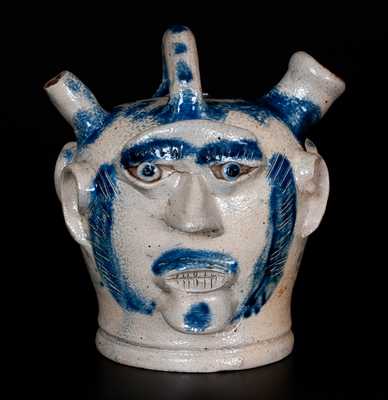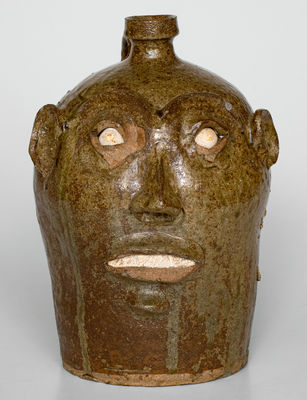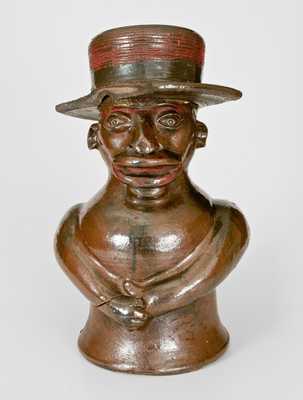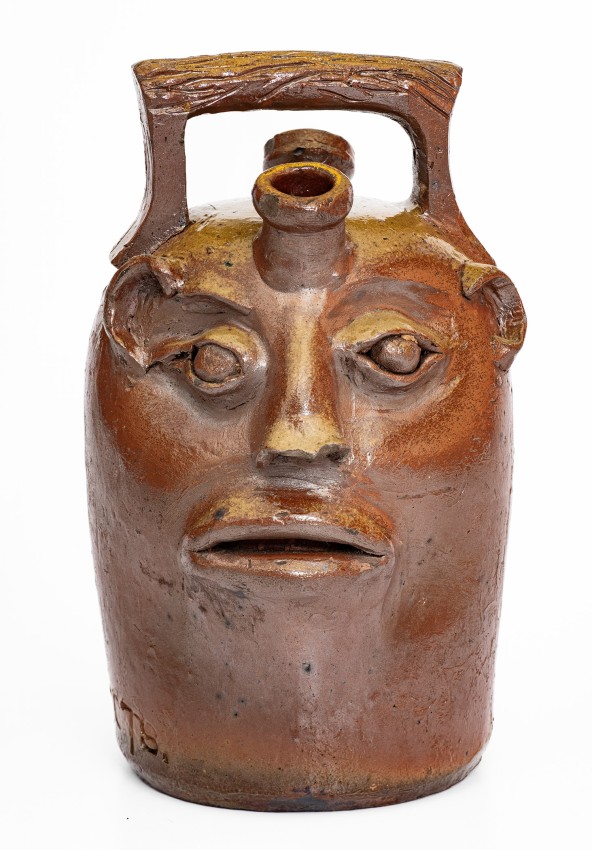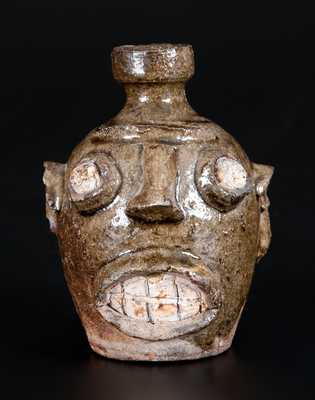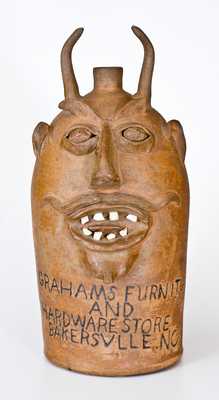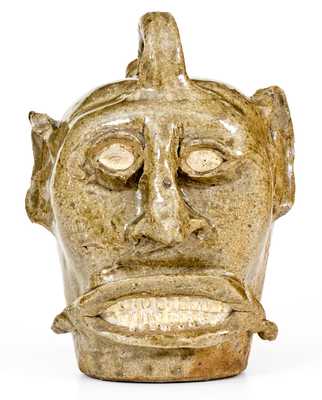Exceedingly Rare and Important Stoneware Presentation Face Pitcher, Impressed "SLOOP ORANGE" and "T. CRAFTS & CO. / NASHUA.," Martin Crafts, Nashua, NH, circa 1840, thin-walled, ovoid pitcher with tooled collar, decorated with a hand-modeled and sculpted clay face, including eyes with impressed pupils and irises, incised eyelashes and brows, a Roman nose with carved nostrils, ears with incised details, a broad chin, and slightly-open mouth. Impressed on forehead with the words, "SLOOP ORANGE." Further impressed below the chin with the maker's mark, "T. CRAFTS & CO. / NASHUA." Surface covered in a dipped brown Albany slip glaze. This work survives as one of a few stoneware face vessels produced in the New England potting tradition and one of a relatively small number of signed American ceramic face vessels from the 19th century. Featuring life-like modeling including a philtrum above the lip, cleft in its chin, raised cheeks, and delicate attention to the eyes, the craftsmanship of this work rivals the highly-stylized renderings of the human face produced further south. Also unusual is its calm demeanor, differing markedly from the bared-tooth faces common to most other regions where this form was produced. The name "SLOOP ORANGE" suggests the pitcher was made for use at sea, with the face possibly representing a sea captain. (It is likely that the referenced ship is that of the same name owned in part by a Moses Crafts in the fourth quarter of the eighteenth century, sailing between New York City and Newburgh, NY. This same sloop was in operation well into the nineteenth century, and while it is unclear if this is the same Moses Crafts who happened to be Martin Crafts' grandfather, it is very likely that this pitcher was inspired by some familial connection.) The face includes piercing to the ear, possibly indicating a sailor of some sort, although piercing to the ears is a trait that is surprisingly documented on face vessels from a number of regions. The pitcher was made by Martin Crafts (b. 1809) at a pottery built in Nashua, New Hampshire as an extension of the well-established Whately, Massachusetts pottery of his father, Thomas (b. 1781). Martin, who had learned the potter's trade in Whately, arrived in Nashua in 1839 after starting another family pottery in Portland, Maine for five years. Crafts was clearly a skilled turner and versatile decorator with a flare for the artistic. An outstanding water cooler with incised eagle design bearing Craft's Nashua stamp resides in the collection of the Art Institute of Chicago. A related and highly important face pitcher made in Whately in 1833 by Crafts' younger brother, Elbridge Gerry Crafts, bears the impressed inscriptions "A FRIEND TO MY COUNTRY / E.G. CRAFTS / WHATELY MASS. / O.THE.DEMOCRATICK.PRESS/ UNITED WEE STAND,DIVIDED,WEE,FALL." Using impressed lettering across the face in a similar manner, but lacking the sophistication in modeling, it indicates face vessels were something produced more broadly within the family. While the Sloop Orange pitcher's artistic value and rare impressions classify it as a masterwork within the field of American face vessels, its New England origin brings new questions to this complex and mysterious category of ceramic art. Literature: For a related Whately, MA face pitcher, see Stradling, The Art of the Potter, p. 96. Loss to one ear. A chip and small nick to opposite ear. H 9".












